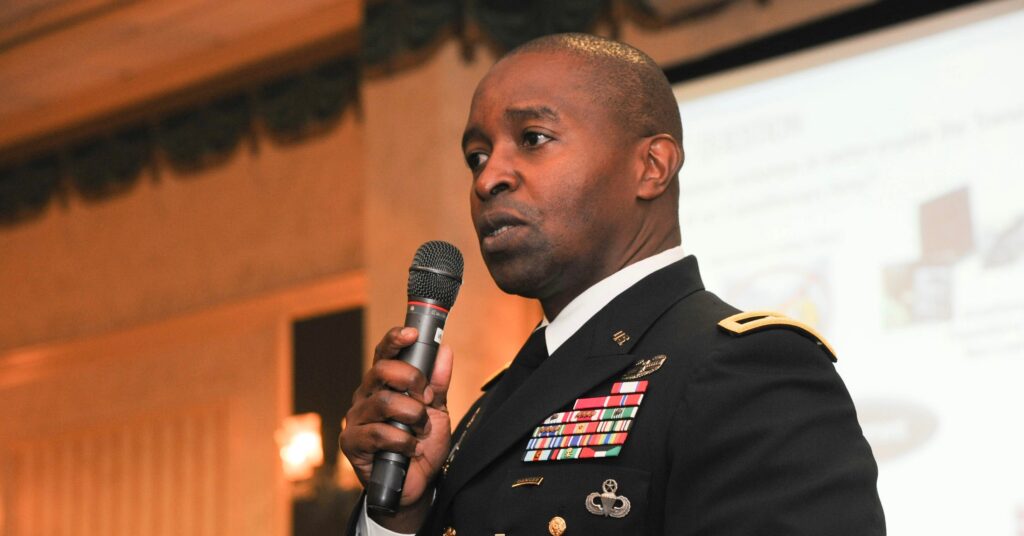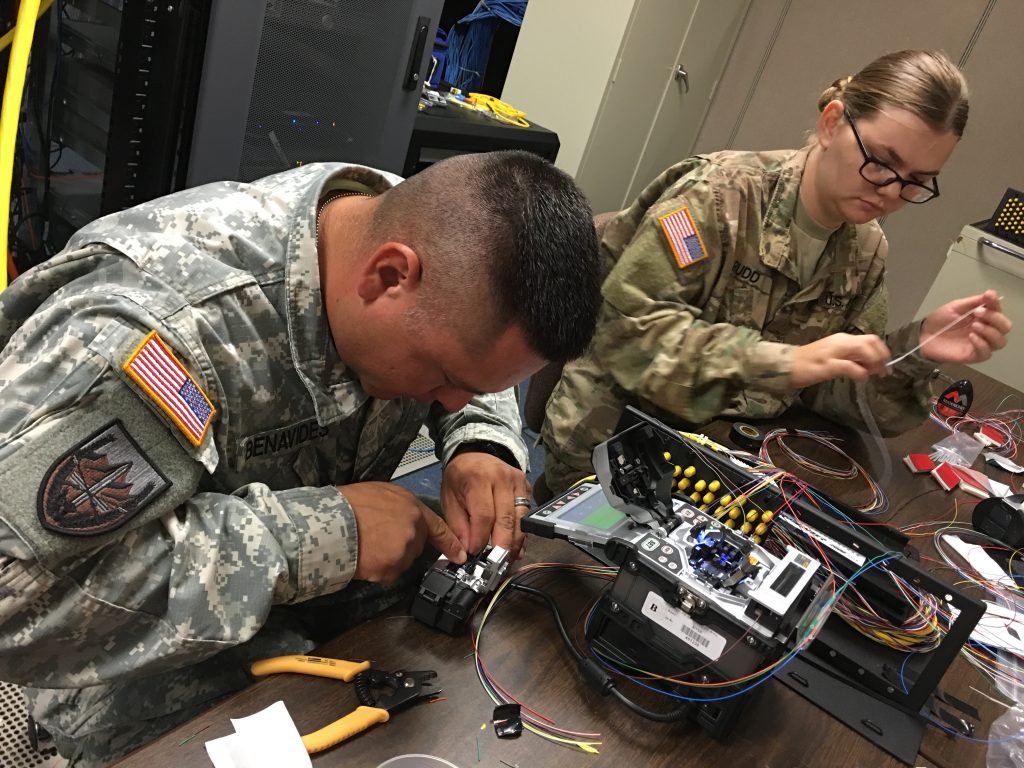Army Bets Big On Service Contracts To Fix Aging IT
Posted on
AUSA HQ: The Army’s information technology is too old and modernization is too slow, the service’s three-star CIO said this morning. So the service needs a “fundamentally different” strategy that relies heavily on the private sector, Lt. Gen. Bruce Crawford said the Army has to start relying on contractors to own and operate IT on the Army’s behalf — what he calls “enterprise IT as a service” — and start moving on-base IT to Defense Department clouds.
“Around 70 percent overall of that [IT] infrastructure — in the case of voice, it’s probably as high as 90 percent — is at or near end of life,” Crawford told the Association of the US Army here. “[It] would take beyond the year 2030 — if we stayed on the current path — to modernize. We ran into one brick wall after another [asking], ‘how do we get speed,'” Crawford continued. So, about six months ago, he and Lt. Gen. Steve Fogarty, head of Army Cyber Command, realized “we needed to do something fundamentally different.”
This effort’s urgent because the aging IT on Army bases can’t protect data from high-end hackers, provide the bandwidth for new augmented-reality training systems or support combat units waging high-intensity warfare against great powers (i.e. Russia and China), Crawford said. “This reform and modernization initiative,” he said, “is less about saving money than it is about increasing operational effectiveness throughout the force.”
That said, when Crawford talks about “enterprise IT,” he’s referring to the Army’s 288 “posts, camps, and stations” in the US and abroad, not the tactical networks that Army units deploy with to the battlefield. “I’m very comfortable with the path we’re on with the tactical network,” Crawford told reporters after the AUSA session, “but in terms of enterprise network modernization, [where] I’m trying to modernize at 288 different locations … you can’t get there from here.”
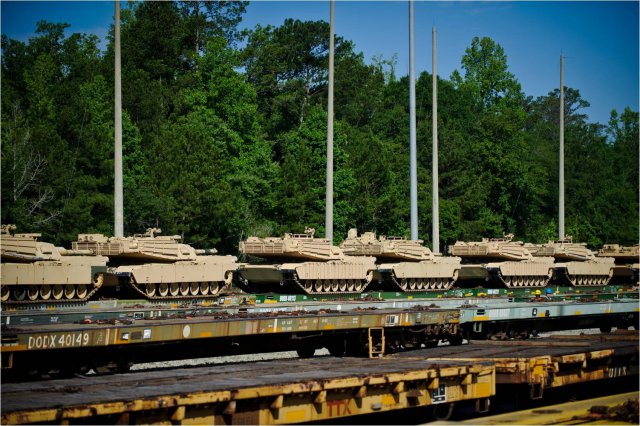
M1 tanks arriving at Fort Benning, one of the big bases that will get priority for network upgrades under the new strategy.
Eight Pilots In 2019
Crawford’s talk this morning at AUSA was both in-depth and wide-ranging, with more detail to come at next week’s Army Signal Conference, but I’d identify three crucial innovations in the new approach
- First, to get the new tech fast — and to keep it updated over time — the Army will no longer buy the hardware and software itself. Instead, it’ll buy access to IT capabilities “as a service” from private contractors, who will not only own and operate networks on Army’s behalf, but also be responsible for keeping them up to date. Effectively, wherever possible, the Army is going to rent IT, not own it.
- Second, instead of trying to upgrade all 288 installations together in step — which means each individual step forward is slow and small — the Army will focus on in-depth, comprehensive, and rapid improvements at 50 top-priority sites. Those will include the Army’s three Combat Training Centers, the eight main Training & Doctrine Command “centers of excellence,” and major “power projection” bases from which large forces deploy abroad.
- Third, because the Army’s still learning how to do this, and because the service’s big-bang, great-leap-forward modernization has gone pretty badly in the past, the new approach will start with small pilot projects:
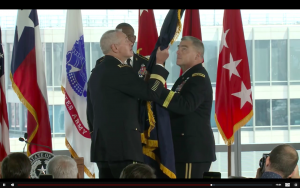
Gen. Mark Murray (left) formally receives the colors of the newly created Army Futures Command from the Chief of Staff, Gen. Mark Milley (left)
For 2019, Crawford plans three pilots for enterprise IT as-a-service, starting with the newly created Army Futures Command HQ in Austin. (The other two are yet to be announced). “Six to eight” more pilots will follow in 2020. These will start with outsourcing on-base networks, he said, but later efforts will cover services and devices.
- 2019 will also see stand-up of an Army cloud program management office and the launch of “at least five, likely more, cloud pathfinder efforts,” he said: “tactical intelligence data, financial management applications, global force integration systems, logistics & maintenance, and the tactical server infrastructure.” In addition, though he didn’t offer a date, Crawford told the AUSA audience to “expect to see two contracts” for cloud: a “managed services” contract to help the Army move to the cloud in the first place; and a “common shared services” contract to keep the cloud going.
Devils In Details
Enterprise-as-a service and cloud are two “complementary” but distinct efforts, Crawford emphasized: “The one thing we didn’t want to do was confuse the two.”
That’s striking because the private sector — which Crawford said the Army’s learned from a lot — doesn’t usually treat the two as separate. In fact, when companies want to move away from owning and operating their own in-house, on-site IT to effectively renting it “as a service,” they typically contract with a cloud provider, which offers remote access to its IT systems. (Despite the fluffy, intangible implications of the term “cloud,” it boils down to “using someone else’s computers, somewhere else.”)
But Crawford apparently doesn’t feel the Army is ready to leap immediately to the cloud, having tried and failed to do so in the past.
“This isn’t the Army’s first venture into the cloud,” he told reporters after his AUSA remarks. “We actually have about 800 different applications that are somewhere on the conveyer belt, started years ago, [to move] into the cloud. I think there’s just short of a couple hundred that are actually in the cloud.”
Why have those efforts moved so slowly? Because they’ve moved separately, Crawford said, repeatedly reinventing the wheel. “[If] everybody goes out and gets their own cloud hosting …their own managed services contract and their own common shared services contract, it’s not a very efficient way to do business,” he said.
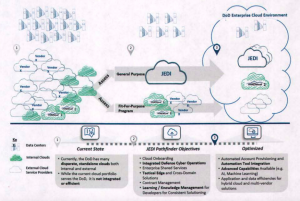
The Defense Department’s strategy to transition to cloud computing. Note the prominent role for the JEDI project. (Click to expand)
Now “Big Army” is going to help individual programs make the move, he said, by setting up common contracts and processes, all in accordance with the Defense Department’s recently released Cloud Strategy.
“The compute and [data] store capability that they are providing is going to be a gamechanger for us,” Crawford said of the department-wide effort, “but [in] all of the services, there are conditions that have to be set to leverage the fit-for-purpose and general-purpose cloud hosting capability they’re going to provide.”
Laying that foundation will require the Army and its contractors to muster a tremendous amount of technical expertise. That means not just software developers and engineers, he said, but also contracting people who know how to write new kinds of contracts that give private industry freedom to innovate while ensuring government data is secure.
“One of the big mistakes of the past,” Crawford told the contract-heavy audience at AUSA, “is we came to you, industry, and we attempted to dictate where we wanted capabilities to come from.” The new contracts need to give contractors leeway to use a mix of wireless and landline, on-site and cloud.
At the same time, Crawford told reporters afterwards, “the devil’s gonna be in the details: how we write those contracts to ensure that Army equities are not only looked after, but those crown jewels are protected.”
Subscribe to our newsletter
Promotions, new products and sales. Directly to your inbox.

